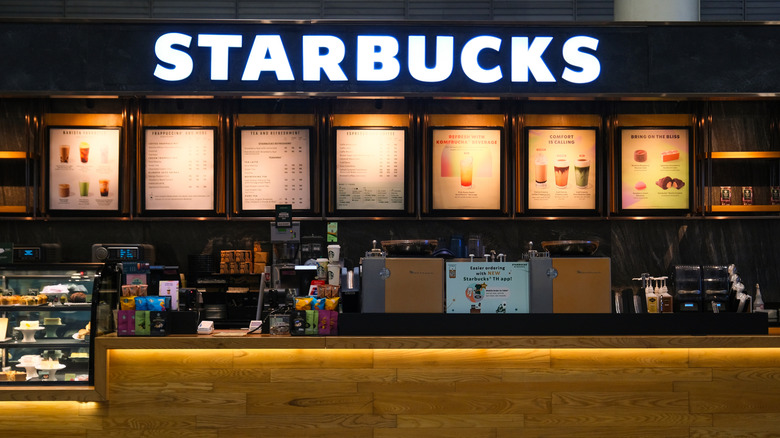Is Starbucks Considered Fast Food?
Outlets of Starbucks, the largest coffeehouse chain in the world, are as ubiquitous as those of fast food behemoths such as McDonald's and Subway. It's iconic for more reasons than simply popularizing the Pumpkin Spice Latte. Consider the chain's history: It started out as a specialty coffee roaster in Seattle that, at one point, was known for being an easy sit-down joint with comfy armchairs and jazz wafting through the air. The few Starbucks Reserve outlets, very different from regular Starbucks, still channel the company's one-time unique selling proposition of making elevated and specialty coffee in an unhurried environment.
However, despite it being predominantly known for coffee and beverages, Starbucks now fits many of the criteria of a fast food chain, which are also commonly called quick-service restaurants. This includes its grab-and-go format for anyone looking for a caffeine fix, standardized décor across the world, online ordering through its mobile app, and drive-thru pickups that account for over 70% of orders. Not only is Starbucks a fast food chain, it is a very successful one. In fact, Starbucks was in the QSR Magazine-published QSR 50 (a list comparing total sales of American fast food companies) in 2021, where it was only bested by McDonald's. Even Starbucks CEO since 2024, Brian Niccol, previously held top spots at fast food chains Taco Bell and Chipotle.
Starbucks is fast food now, but wasn't always
Starbucks' image can be confusing. On one hand, it fulfills all the criteria that make it a fast food chain, but on the other, it's considered overpriced even though fast food generally has a pocket-friendly image. This dichotomy seems to stem from the coffee chain's roots, which are very different from the fast food environment of today: Just as Arby's first-ever menu looked very different, Starbucks' first store in Seattle's Pike Place Market was a specialty coffee roaster selling whole bean coffee, tea, and spices. While Starbucks' iconic siren logo was inspired by Pike Place's seaside location, the first Starbucks coffeehouses took inspiration from European coffeehouses and were havens for leisurely coffees and conversation — but far cries from the fast food joints of today. Starbucks' serving sizes are a nod to its Italian-inspired roots.
As the chain expanded rapidly, the systems put into place to increase efficiency robbed Starbucks outlets of the eclectic character customers had come to like. Back in 2007, Starbucks Corporation founder and Chairman Howard Schultz pointed out how its stores were now being described as sterile and cookie-cutter, something associated with modern fast food outlets. At that time, Starbucks made a significant push to improve public perception, even closing down several hundred stores and focusing on more curated in-store experiences. However, the Starbucks of today is unequivocally a fast food chain, a process hastened by the sharp rise of takeaway and home delivery after the COVID-19 pandemic.

